Introduction
Hybrid solar inverters are a recent innovation that has improved the effectiveness of solar energy systems. Users can utilize the solar power as it is produced, save it for later use, or even sell it to the grid. But the question of whether hybrid solar inverters can work without batteries always arises. We’ll explore the realm of hybrid solar inverters and batteries. In addition, we will understand whether it’s possible to power a solar array without energy storage. To better enlighten, this article will discuss the importance of batteries in relation to hybrid inverters.
Understanding Solar Inverters
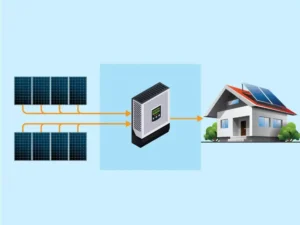
The DC electricity produced by solar panels must be converted to AC electricity. The conversion is done by means of solar inverters. They take DC power and convert it into the more common AC form for powering household appliances. In addition, solar inverters play a critical role in optimizing a solar power system’s efficiency and output. There is a wide range of solar inverters available. One can tailor each of these to meet specific needs in solar energy systems. Following are three major types of inverters:
- Grid-Tied Inverters
- Off-Grid Inverters
- Hybrid Inverters
Hybrid solar inverters
The focus of this article is hybrid solar inverters. Their flexibility in responding to changing conditions has contributed to their rising appeal. They make it possible to take a holistic view of solar energy management. In addition. They help maximize solar panels’ output.
Hybrid inverters are capable of:
- Converting DC electricity to AC for immediate use within the household.
- Storing surplus energy in batteries for use during periods of low solar generation.
- Providing backup power during outages.
- Selling excess energy back to the grid through net metering or other feed-in tariff programs.
The Role of Batteries in Solar Systems
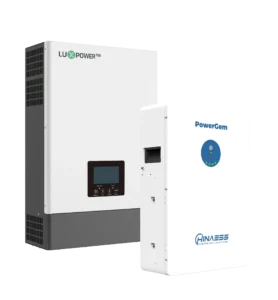
Batteries are a crucial component in solar power systems, particularly in off-grid and hybrid setups. They serve several essential roles in these systems:
1. Energy Storage
You can use batteries to keep the extra energy that solar panels produce throughout the day. This stored energy is available for use when solar output is minimal, such as at night or on overcast days.
2. Load Balancing
Batteries help regulate the supply and demand of energy. When power output exceeds demand, these systems store the excess energy and release it later. This delicate balancing effort guarantees reliable electricity delivery.
3. Backup Power
Batteries handle power outages in hybrid systems. In the event of a power outage, the grid will automatically be bypassed, and battery power will be used.
Benefits of using batteries in a solar setup
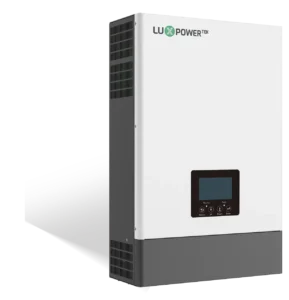
1. Energy Independence
Battery storage allows consumers to use less grid electricity. They can save money on power costs. Furthermore, they provide people with more control over their energy supply by storing energy for later use.
2. Energy Security
Batteries provide continued functioning of essential electronics in the event of grid failure. This is especially crucial in places where energy from the grid is intermittent.
3. Optimized Solar Consumption
Users may enhance their own usage of solar power thanks to batteries. It is possible to reduce reliance on grid power by storing excess energy produced during the day. Users can consume it when demand is highest in the evening.
4. Environmental Benefits
Storing energy for use at times of high demand cuts down on the usage of fossil fuel power plants. It helps lower emissions.
Limitations of using batteries
While batteries offer numerous benefits, they also come with certain drawbacks:
1. Cost
The expense of batteries may significantly increase the price of a solar power system. Some households and companies may be put off by the high initial cost.
2. Limited Lifespan
The average lifetime of a battery is between 5 and 15 years, depending on the technology. The expense of replacing them is inevitable.
3. Maintenance
To guarantee maximum performance, you need to service the batteries on a regular basis. You should also track battery health, temperature, and voltage readings. There is a need to monitor frequency of cleaning and, in certain circumstances, water replenishment.
Working of Hybrid Solar Inverters
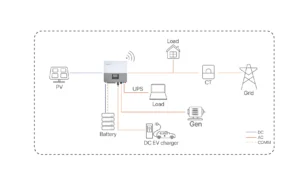
Solar panels produce power throughout the day when sunshine is plentiful as DC power. The DC power is then transformed into AC by the hybrid inverter. In AC form, you can utilize it to run your home’s appliances. If there is any surplus, you can recharge the batteries with it. When solar output is more than your home’s current energy need, the battery receives the excess current. Chemical energy is used to store this power in the batteries. Hybrid inverters make sure that your appliances use as much solar electricity as feasible. The batteries are charged with any surplus electricity. Hybrid inverters may send any remaining extra solar power back to the grid, even if the battery is already at capacity. In many areas, you may be paid for the power you produce in excess via a net metering agreement.
Maximizing self-consumption and grid independence with batteries
One of the primary goals of hybrid solar systems with batteries is to maximize self-consumption. Here’s how they achieve it:
1. Load Shifting
Batteries store excess solar energy for later use. As a result, they help reduce demand for grid power during evening and nighttime hours.
2. Energy Independence
A well-planned setup will allow you to become more energy independent, using stored solar power instead of the grid. In places where grid energy is either costly or unstable, this is a huge benefit.
3. Reducing Peak Demand
Reduce your peak power usage and your utility costs, particularly in time-of-use pricing areas. You can do that by utilizing stored energy during peak hours.
Battery-less Hybrid Solar Inverter
Hybrid solar inverters are built with the flexibility to operate in a battery-less mode. Such inverters accommodate people who would rather not invest in energy storage or who have unique use cases.
Operation during daylight hours
The hybrid solar inverter’s operation is simple yet effective when used in battery-free mode. Sunlight is converted into DC energy by solar panels. Using a hybrid inverter, DC power is transformed into AC and utilized to directly power a building. This is exactly how a regular grid-connected inverter works. Your electronics and home appliances immediately use any extra power that is produced. If there is any surplus, it is sent back into the power system. Extra power doesn’t have to be sent to batteries.
Energy production and grid interaction in the absence of batteries
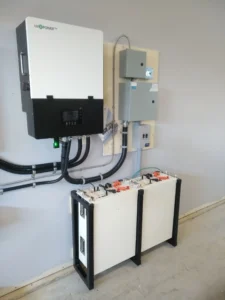
For systems without batteries, the hybrid solar inverter works like a grid-tied inverter. Here is how the energy is generated and how it interacts with the grid:
1. Energy Production
When sunshine is available, solar panels produce power. You consume all of the energy produced by your solar panels right there on the property. If you generate more electricity than you need, it goes back into the system.
2. Grid Interaction
In many regions, “net metering” automatically feeds extra energy back into the grid and credits it. This allows you to “bank” the extra energy you generate and use it as a credit against your future usage of the grid’s power supply.
Alternative Uses for Excess Energy
Heating Water
Extra solar power may be used to heat water for use around the house. A heat pump or solar water heater may do this. Conventional water heaters may be used less often if excess energy is used to heat the water instead.
Electric Vehicle Charging
Consider using the extra power from the sun throughout the day to charge your electric vehicle (EV). This not only helps you save money on gas, but it also decreases your use of nonrenewable energy sources.
Smart Appliances
Smart appliances are becoming more commonplace in today’s increasingly connected environment. You may save money by purchasing appliances that have load management capabilities. This kicks in when too much energy is being used. If you have solar panels and produce more energy than you need, a smart dishwasher may start washing dishes.
Feeding surplus electricity back to the grid
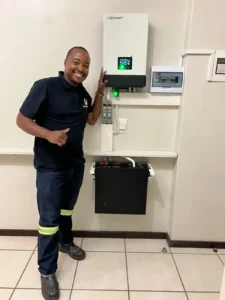
If you live in a state or country that has a net metering scheme, you may sell any extra power your solar panels produce back to the utility company. You may sell your extra power to the utility company using this method. To facilitate this bidirectional meters are used.
Economic Benefits
Depending on how much energy you provide to the grid, net metering may considerably lower your power rates. It may even result in rewards from your utility company.
Environmental Impact
Along with to the monetary incentives, net metering promotes the use of renewable energy sources. This in turn helps decrease greenhouse gas emissions.
Policy and Regulation
Depending on where you live, net metering may or may not be an option, and its specifications may change. To maximize the benefits of providing extra energy to the grid, learn about local laws and incentives.
Conclusion
In conclusion, choose a hybrid solar inverter with or without batteries based on your energy demands and objectives. You may easily adjust the settings of a hybrid solar inverter to meet your specific requirements. Every effort made to make use of solar energy results in a cleaner and more sustainable future. Whether it is via the purchase of batteries for energy storage or participating in a net metering scheme

